What’s Happening in 2025?
- Premiums surged another 12–18 % on average for properties inside the Wildland–Urban Interface (WUI).
- Policy non-renewals are rising as carriers exit high-risk ZIPs, prompting a state-level investigation into affordability.
- Deductibles jumped to $5 k–$10 k on many admitted-market policies for wildfire losses.
Why Are Rates and Non-Renewals Climbing?
- Claim severity: Statewide wildfire payouts have tripled since 2018, pushing insurer loss ratios over 70 %.
- Reinsurance costs: Global treaties renewed at double-digit increases in January 2025, adding pressure to retail pricing.
- Volunteer & distant fire protection: Much of Yavapai County sits in ISO Public Protection Class 9 or 10, signalling longer response times and limited water supply.
- Regulatory lag: Arizona tracks rates but not non-renewal data, making risk hotspots harder to stabilize.
Who Is Hit Hardest?
- Homes with wood-shake or Class-C roofs older than 15 years.
- Properties over 1,000 ft from a hydrant or lacking a 2,500-gallon water source.
- WUI parcels near Granite Mountain, Thumb Butte, and the Williamson Valley corridor.
Where Can You Still Find Relief?
- Defensible-space grants: Prescott Fire Department offers up to $500 matching for brush-clearing and ladder-fuel removal.
- Firewise USA® discounts: USAA and several regional carriers give 5–15 % premium credits for homeowners in recognized communities.
- HB2384 incentive: Insurers must factor local Firewise designations into rates for towns under 150,000 population—Prescott qualifies.
- 60-day non-renewal pause: Under HB2800, insurers cannot cancel or refuse to renew within 60 days after a declared wildfire emergency.
When Should You Act?
- 60 days before renewal—time to document mitigation and request a re-inspection.
- Immediately after upgrades like a Class-A roof or hardscape perimeter—submit photos and contractor invoices for mid-term premium credits.
- Before escrow closes—verify insurability and projected cost before buying a WUI home.
How to Lower Premiums Without Sacrificing Protection
- Create 100 ft of defensible space: Trim trees, clear brush, and screen vents to block embers.
- Upgrade roofing & siding: Class-A shingles and non-combustible siding can shave 10–20 % off wildfire surcharges.
- Add on-site water: A 2,500-gallon tank or dry hydrant may improve ISO rating and attract admitted carriers.
- Increase the all-peril deductible strategically (e.g., $2,500 vs. $1,000) to offset new wildfire deductibles.
- Shop surplus-lines as a bridge: If you’re dropped, place coverage in the E&S market while finishing mitigation—then re-apply to the standard market next cycle.
Key Take-Aways for Prescott Homeowners
- Expect double-digit premium hikes in high-fuel zones through at least 2026 unless loss severity drops.
- Mitigation proof matters: Firewise participation, new roofs, and water sources can move you back into an admitted carrier.
- Early, documented shopping is cheaper—and safer—than scrambling after a non-renewal notice.
Sources
- AZPM – “The Buzz: Wildfire & Home Insurance”
- KJZZ – Insurers Raise Rates, Drop Coverage
- Prescott Fire Dept. – Wildfire Risk-Management Grants
- Arizona HB2384 (2025) – Firewise Rating Credits
- NFPA – Firewise USA® Insurance Discounts
- AZFamily – Resiliency & Mitigation Council Formed
- 12News – Insurance Costs Surge in Prescott
- Arizona HB2800 (2025) – 60-Day Cancellation Moratorium
- Arizona DIFI – Firewise & Insurance (PDF)
Need a wildfire-risk check-up? Inszone’s Prescott team can review your policy, advise on mitigation credits, and help you secure the best available coverage.





